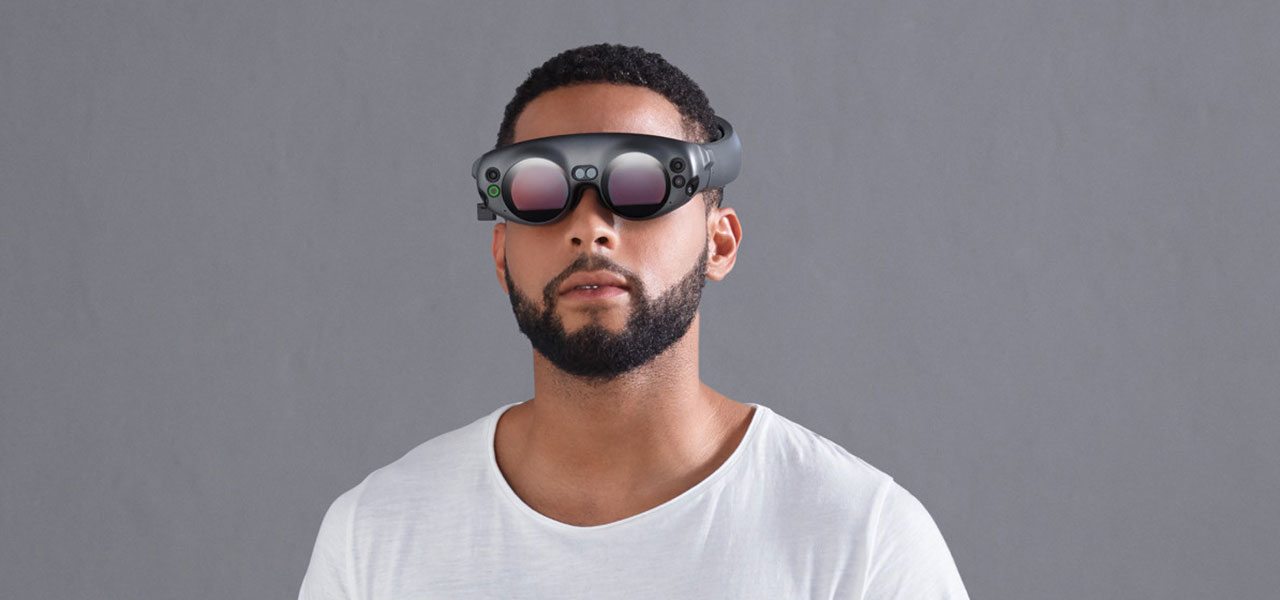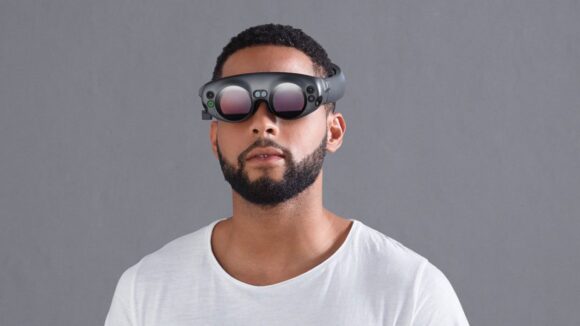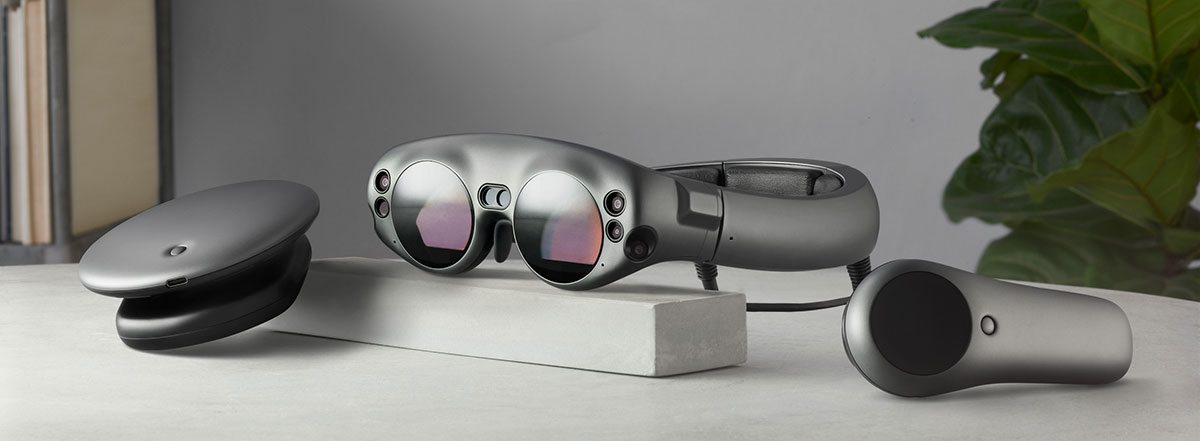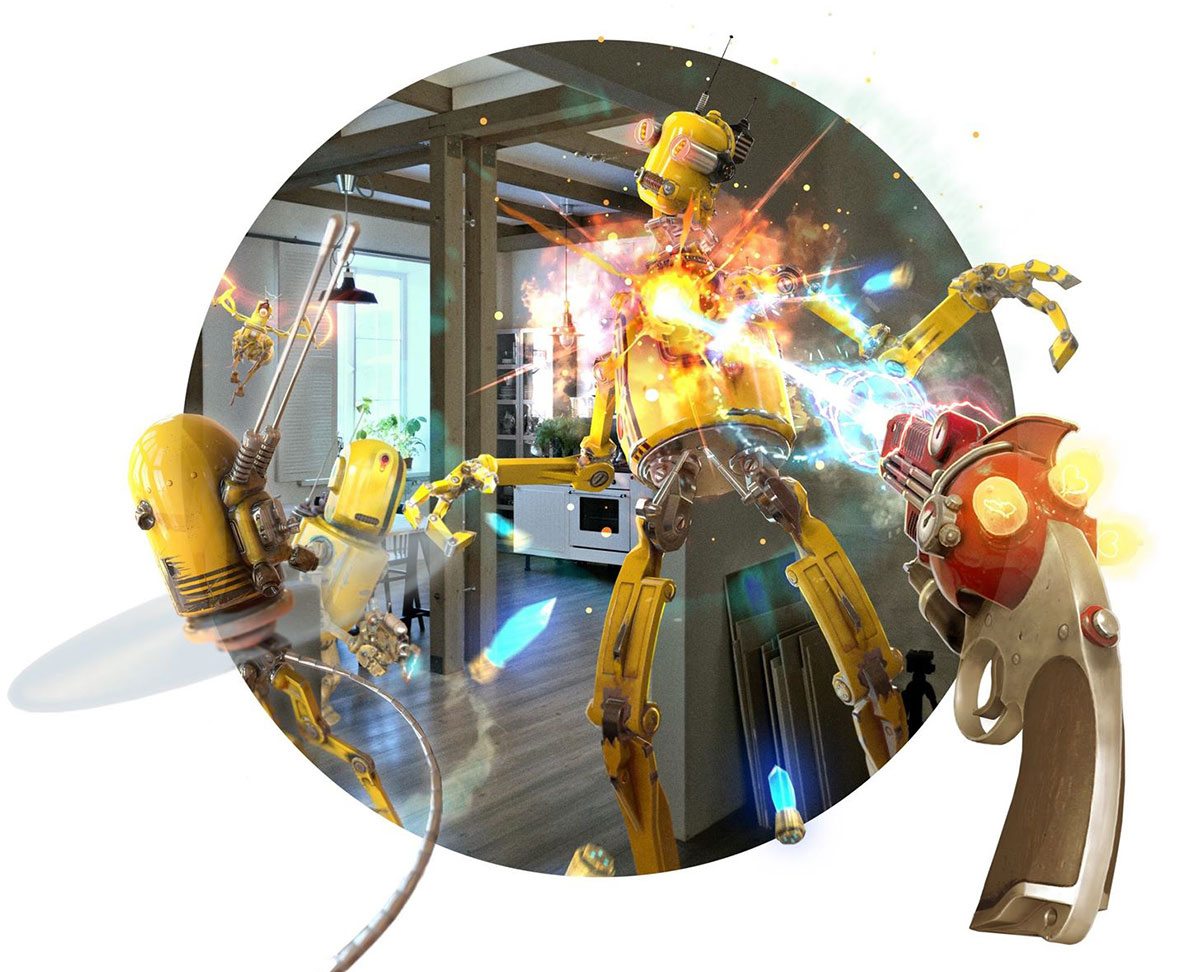

Magic Leap Unveils Its $2 Billion Augmented Reality Headset
Fort Lauderdale, Florida-based Magic Leap unveiled today what $2 billion dollars of Silicon Valley investment will get you: an augmented reality/mixed reality (ar/mr) product called “Magic Leap One: Creator Edition.”
There are three components to the Magic Leap hardware:
- The goggles, called Lightwear, which combine “digital Lightfield technology with environment mapping, precision tracking, and soundfield audio”
- A puck-like mini-computer called a Lightpack that attaches to the goggle and can be clipped to your belt or pants
- A hand-held controller with force control, haptic feedback, and six degrees of freedom

The Magic Leap website offers some additional vague details about the technology, in addition to examples of how the goggles can be used, ranging from the practical (spatial web browsing) to entertainment (gaming), as well as the nonsensical (painting with turtles instead of paintbrushes?). In this interview, Magic Leap founder Rony Abovitz explains that they call it the “creator’s edition” because the device encourages “actively creating with the computer” instead of the passive consumption of content.
If you’re curious to understand what makes Magic Leap’s tech unique, Rolling Stone has among the most in-depth reports, including details from a reporter who has used the product. The problem with experiential tech is that written descriptions don’t do it much justice, and it’s still difficult, at least for me, to gauge exactly how Magic Leap differs from existing ar/mr hardware.
Something we do know though is that Magic Leap employs a team of animators, even if it’s not exactly clear what they’ve been working on for the last couple years. Some of the company’s animation team is ex-Moonbot employees, who were picked up last year following the collapse of the Shreveport, Louisiana studio.

Skepticism remains around Magic Leap because of the astronomical sums that the company has raised to develop its technology, and the seeming gap between what the company has promised and what they are delivering. Business Insider, for example, suggests that the Magic Leap has the same fundamental limitations as the Microsoft Hololens, which is a limited field of view that doesn’t match a human’s field of view.
The venture capital world itself has a sketchy track record when it comes to backing companies that have never launched a product – Juicero and Theranos anyone? – and with Magic Leap having raised nearly $2 billion to date, expectations for the company to deliver something amazing are sky-high.
Magic Leap hasn’t released any firm details on pricing or availability, but has stated that a software development kit (SDK) is expected to be made available in early-2018, followed by the launch of the hardware later in the year.
